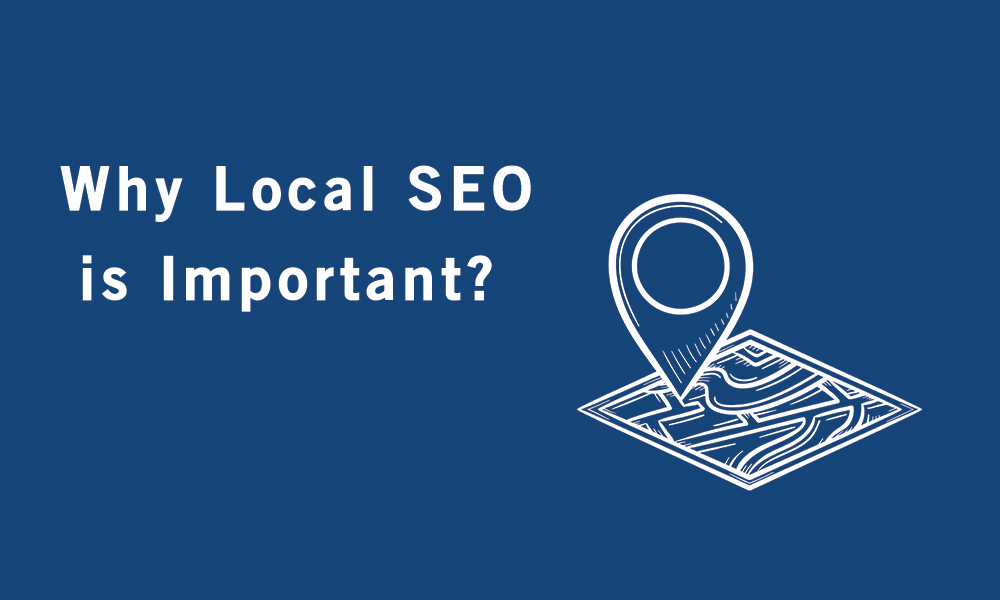Did you know that web crawlers flag different metrics for local and more general listings? Local ranking is determined by relevance, distance, and prominence. So, how do you convince Google and other search engines that your business is relevant, near-by, and well-known?
Taking these top 10 steps to improve local SEO should help:
- Have an active website.
- Stay active on social media.
- Embed your Youtube videos to your site.
- Add an active, strategic blog to your website.
- Consider the structure of your website and internal linking.
- Make sure your website speed is up to par.
- List your business in local and national directories.
- Build links to your site.
- Optimize the meta-description and title tags for your location and business category.
- Harness the power of a great press release.
1. Have an active website.
You may think your simple site from 2011 is perfect as it is, but search engines view it as a “dead” site with no recent or relevant information to offer. When you update your website, the search engine’s bots take another look.
Just be sure that the content you’re adding is relevant and high-quality. It’s better to occasionally add valuable content that consumers are looking for. Walls of poorly-written copy will get you nowhere, especially if you’ve stuffed them with more keywords than make sense in the text.
2. Stay active on social media.
It’s true that Google doesn’t specifically consider your likes, shares, and content for rankings. However, they can increase your prominence; a key factor for local SEO. A successful social media campaign can boost your website traffic, brand awareness, and localized relevance. And when that top-notch content you’re sharing from your website is shared by your followers? You’re gaining links.
If you’re not online yet, Facebook, Twitter, Youtube, and Instagram are all good options to consider. If you can, survey your customers to find out where they’re most active. Already got a good thing going on social? Great! Take a moment to double-check that your name, address, and phone number (NAP) are up to date. The more consistency, the better.
3. Embed your Youtube videos to your site.
Web pages with embedded video have the chance to appear on the SERP with a link, a description, and the video. This stands out in a sea of text-only results, leading to more clicks and more traffic to your site.
Why not just link the videos?
When viewers click video links, they’re redirected to the page where they’re hosted. They may or may not come back to your site. Your bounce rate increases, which is not exactly SEO gold.
When visitors spend time watching your embedded video, the average time spent on your site increases, indirectly giving your SEO a boost.
Keep in mind that Google’s web crawlers find it easier to understand and categorize your video when extra context is included. Make sure your embedded videos have schema markup, including:
- Thumbnail
- Publisher Name
- Publisher logo
- Description
- Title
- Upload Data
4. Add an active, strategic blog to your website.
Topics should be relevant and keywords should be selected carefully. If you’re not sure what to write about or which keywords to start with, find out what you’re already ranking well for. From there, it’s time to brainstorm.
Put together a list of local keywords and phrases that are relevant to your business. See what type of traffic each of them are attracting. What is your local audience searching for most often? Don’t be afraid to venture slightly outside of your storefront’s location. Include nearby locations and keywords that pair well with your service and product.
Make your content both city-based and informative. Consider local news and promotions, as well as industry trends.
5. Consider the structure of your website and internal linking.
The user-experience matters just as much as the relevance of your content. Make sure all navigational elements on your site appear consistent and are clickable links. Double check to make sure your search feature is working correctly. Keep consistency in your design: Visitors have a good idea where they should click next and where they’ll end up.
Use your anchor keywords where appropriate but don’t make it spammy. “Keyword stuffing,” or putting words you want to rank for on every page of your website whether they’re relevant there or not, will get you ranking compromised by Google. Keep it casual and natural.
6. Make sure your website speed is up to par.
Keep those load times down! Checking your website’s speed on Google PageSpeed can give you an idea of how you’re doing. Images, hosting, template, and platforms can all impact your score, which will be between 1 and 100.
A slow site leads to lost traffic and a high bounce rate. It also means search engines are able to crawl fewer pages of your site with their allocated crawl budget. If they can’t analyze the pages of your site, they can’t index them!
7. List your business in local and national directories.
Even if your website doesn’t rank on the first page, directory listings often do. Google My Business should be number one on the list! The other sites you choose should be determined by your industry. Listing your business on directories it doesn’t “fit” into can actually hurt your ranking. Most business owners can consider Yelp, BBB, Bing, and Yahoo Local to start.
Keep things consistent. Your business name, address, and phone number need to be the same across all of these sites for the best local SEO results.
8. Build links to your site.
Link-building deserves its own blog post, but for now you should get yourself familiar with the general process: When an external website points readers to your own with a hyperlink or anchor text, this is considered link-building. When one website links to another, they are sending a signal to the search engine that it is relevant and useful.
There are a variety of creative ways to achieve this. Can your clients mention you on their websites, blogs, or social media? Ask them to point to your website with a link. Do you follow any blogs in your industry? Provide them with an article. They may be willing to reciprocate your gesture by linking to your site.
To improve local SEO, target businesses within your area. Remember that more is not always better. When scammy websites link to yours, they can harm your ranking.
9. Optimize the meta-descriptions and title tags on your site for your location and business category.
These pieces of code are added to the backend of a web page to distinguish its purpose. Make this work for you, not against you. Utilize your main keywords in your descriptions and title tags.
In your homepage meta information, include your general location and your business category in both the meta description and the title tag. Separate your title tags by a post.
EXAMPLE: Flower Shop In Irvine, Orange County l “Your Business Name”
“We hand select each bouquet of flowers to provide the highest quality and freshness here in Irvine, Orange County. Call us for delivery. “949-###-####”
10. Harness the power of a great press release.
A well-written press release should be optimized for your local keywords. Once it’s distributed to authoritative sites, such as news outlets, you’ll earn multiple meaningful backlinks at once. Press release links are more likely to be indexed than your actual website, because search engines crawl websites associated with news outlets more often than other sites?
To save yourself some headache, you can hire a freelancer to write the release and a publisher to send it out. Press release publishers are usually willing to offer a few pointers on the process, as well.
BONUS: Ask the person putting together your press release to embed a Google Place Map inside it. When the high-authority sites publish your release, local SEO improves because your prominence is increased. Plus, it also helps potential customers find you.

